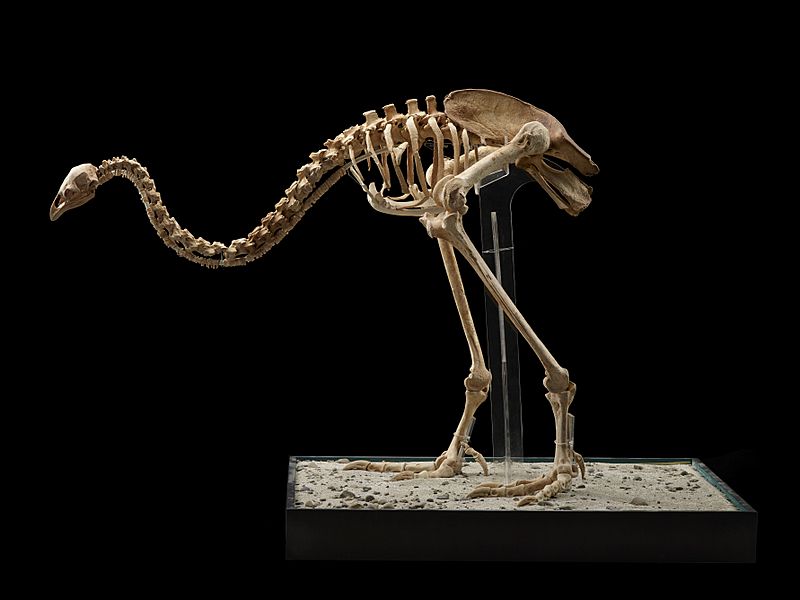Image: Megalapteryx didinus mount (1)

Description: Mounted Megalapteryx didinus skeleton at the Museum of New Zealand (Fossil Vertebrates Collection). The entire skeleton of this upland moa had been lying in limestone cave for fifteen thousand years - since the last glacial period - when it was discovered in March 1987. The Honeycomb Hill Cave is in the remote Oparara Valley near Karamea in New Zealand's South Island. The cave consists of a 20-kilometre network of underground passages, at several levels. Over time, the roof had collapsed in several places, creating vertically sided potholes up to 50 metres deep - perfect pitfall traps for the moa that were abundant in the forest above. Once a flightless bird fell in, there was no escape; the now extinct giant eagles would then scavenge their corpses. Usually with such finds, many bones have been broken or washed away, particularly after so many millennia. This complete skeleton was found lying in a dry passage 15 metres above the present stream. A sudden fall in the water level and the stable environment of the cave provided perfect protection. The skeleton was excavated, then articualted back at the museum. It could then be seen that this moa species stood about 1 metre tall with a weight estimated at 56 kilograms. The skeleton shows also that moa were low-slung birds, with the head held only slightly above the level of the back - similar to modern cassowaries, but unlike ostriches. There are no wing bones at all; moa were unique among birds in having lost all traces of their wings.
Title: Megalapteryx didinus mount (1)
Credit: https://collections.tepapa.govt.nz/object/92365
Author: Te Papa - Museum of New Zealand
Usage Terms: Creative Commons Attribution 4.0
License: CC BY 4.0
License Link: https://creativecommons.org/licenses/by/4.0
Attribution Required?: Yes
Image usage
The following page links to this image:

